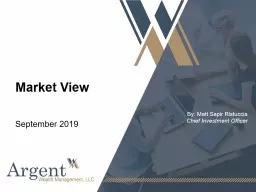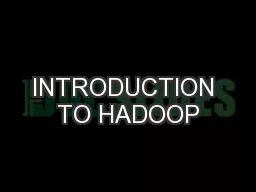PPT-By: Matt Sapir Ristuccia
Author : enjoinsamsung | Published Date : 2020-06-16
Chief Investment Officer Market View September 2019 Overview The market is trying to price the future outcome of two competing forces Force 1 Negative trends in
Presentation Embed Code
Download Presentation
Download Presentation The PPT/PDF document "By: Matt Sapir Ristuccia" is the property of its rightful owner. Permission is granted to download and print the materials on this website for personal, non-commercial use only, and to display it on your personal computer provided you do not modify the materials and that you retain all copyright notices contained in the materials. By downloading content from our website, you accept the terms of this agreement.
By: Matt Sapir Ristuccia: Transcript
Download Rules Of Document
"By: Matt Sapir Ristuccia"The content belongs to its owner. You may download and print it for personal use, without modification, and keep all copyright notices. By downloading, you agree to these terms.
Related Documents














